Carrie Chapman Catt House (Juniper Ledge)
Introduction
Text-to-speech Audio
Suffragist Carrie Chapman Catt lived in the home known as Juniper Ridge from 1919 to 1928. After years of frenetic activity, Catt moved to the home after passage of the Nineteenth Amendment along with her partner, Mary Garrett "Mollie" Hay. The house offered solitude and an escape from the pressures of public life, although Catt continued to be active after moving there. Because of its connection of Catt, the home is listed on the National Register of Historic Places.
Images
Juniper Ledge
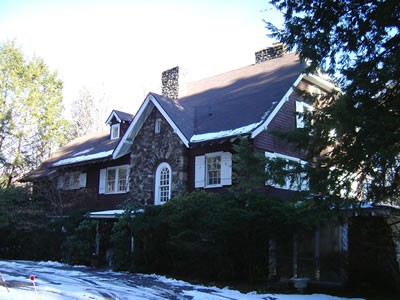
Carrie Chapman Catt
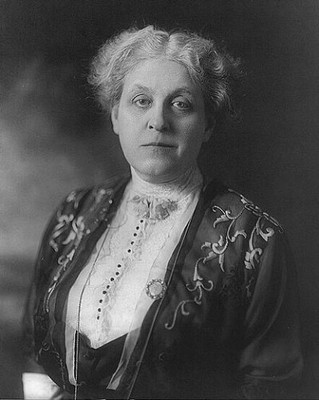
Mary Garrett Hay, 1918

Catt and Hay cast ballots on November 5, 1918 (New York granted the vote to women in 1917)
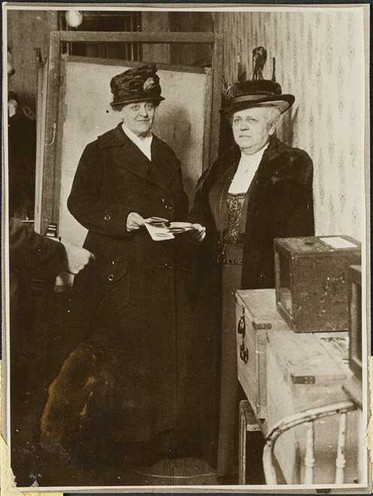
Carrie Chapman Catt (receiving flowers) and Mary Garrett Hay (to Catt's right) are at the center of this photo. Catt was arriving back to New York after Tennessee had ratified the 19th Amendment and it had been signed into law on August 26, 1920,
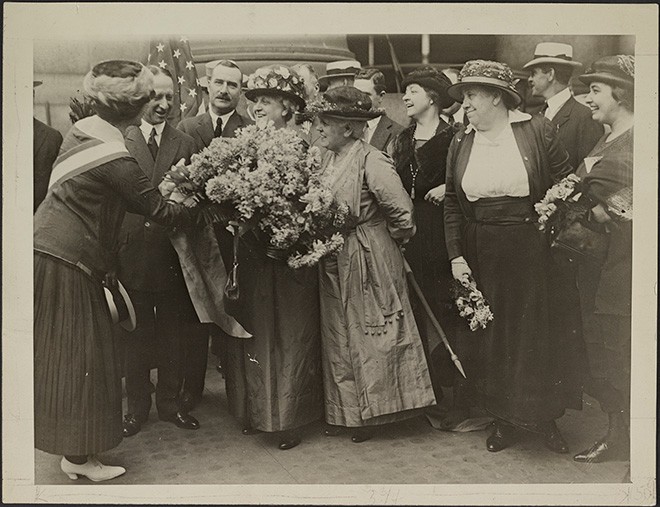
Carrie Chapman Catt and Mary Garrett Hays vote in their first presidential election, November 1920.
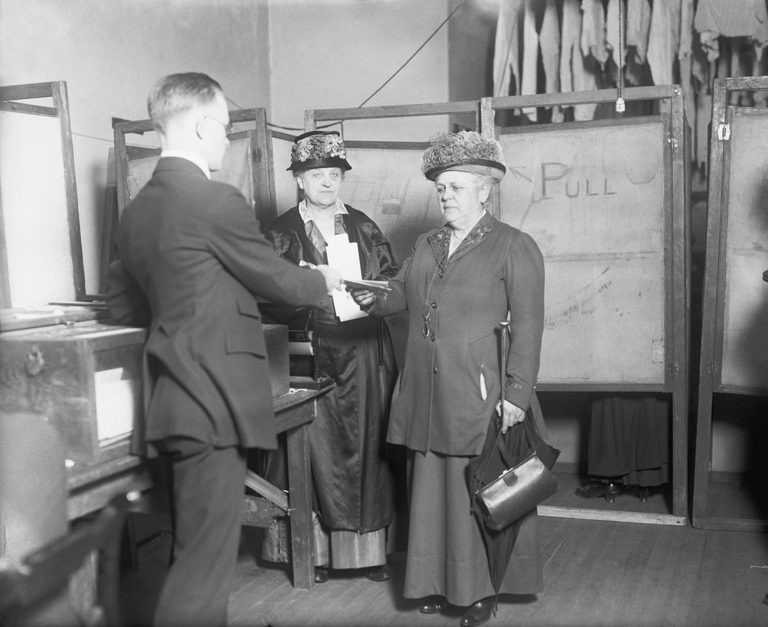
Juniper Ledge
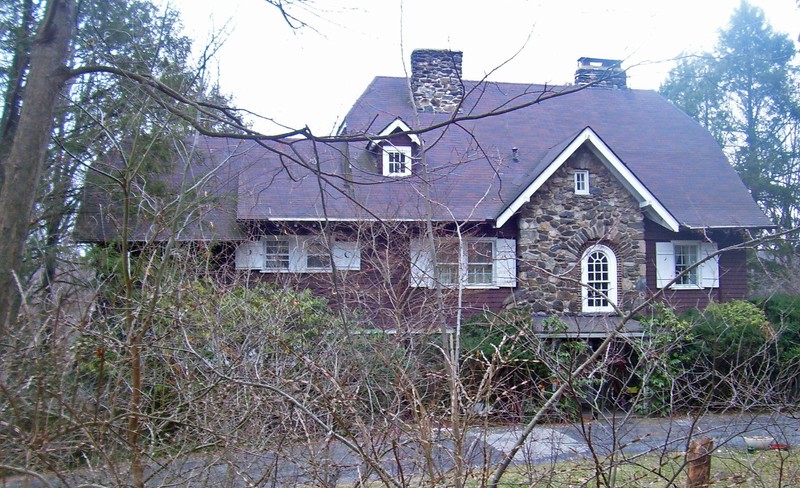
Juniper Ledge,
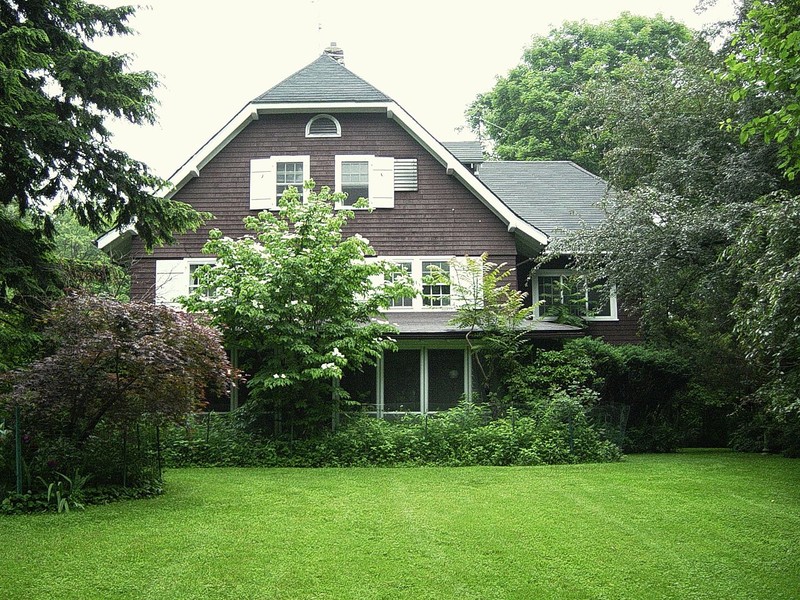
Interior, 2003
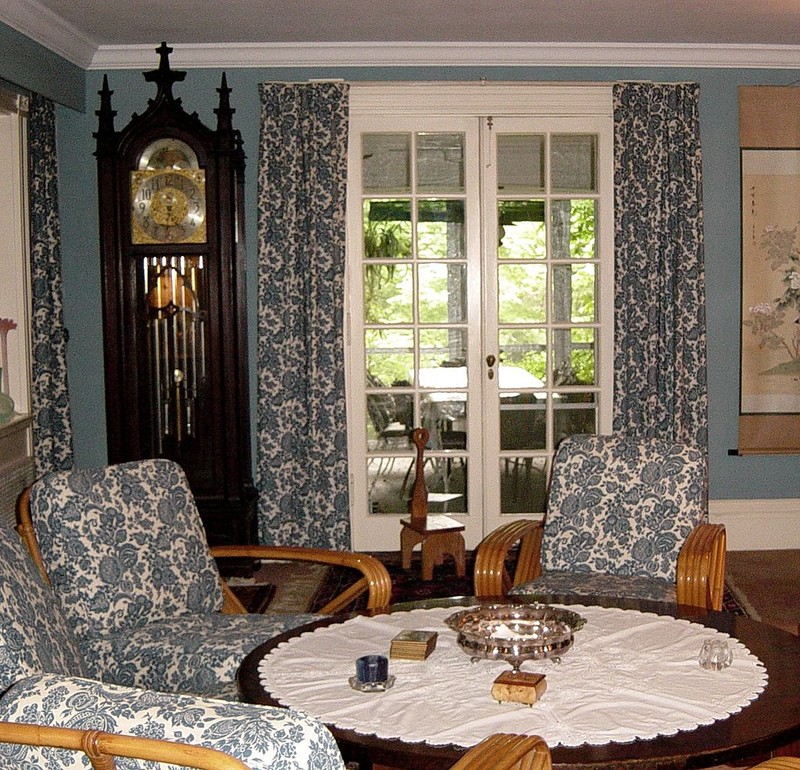
Interior, 2003
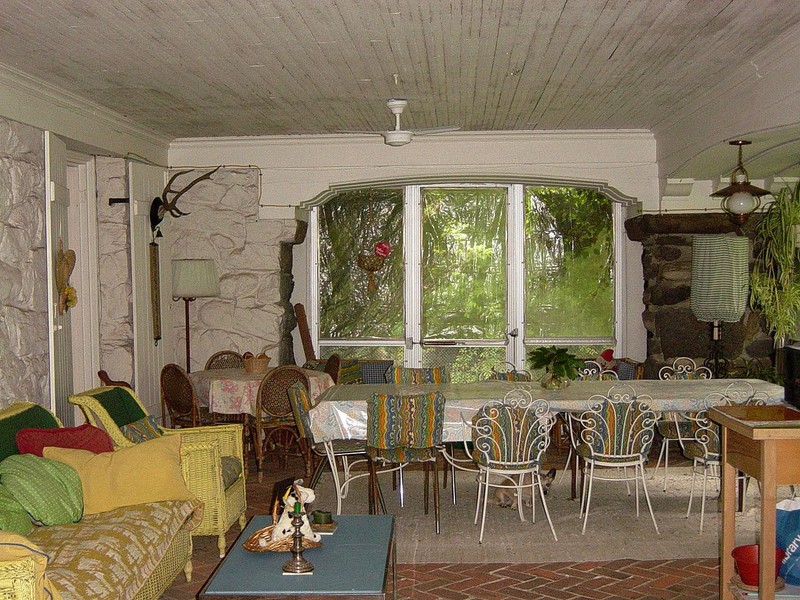
Interior, 2006
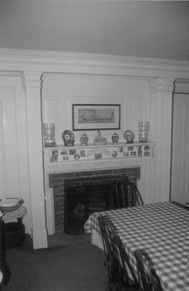
Interior, 2006
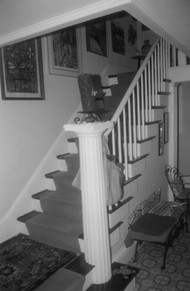
Backstory and Context
Text-to-speech Audio
Carrie Chapman Catt devoted her life to securing women's suffrage and the end to war. During her marriage to her second husband, George Catt, she returned to her home state of Iowa. There, she became involved in the Iowa Woman Suffrage Association and devoted roughly four months each year to the cause. Eventually Catt and her husband moved to New York City, where she became involved with the National American Woman Suffrage Association (NAWSA). Catt twice served as the organization's president; she ended her first term early to care for her ailing husband. Later, following the death of her husband, Catt returned to her leadership of NAWSA.
These were busy years for Catt, and after the death of her husband she purchased this Briarcliff Manor home named Juniper Ledge by its previous owners. Catt moved into the home with her partner, Mary Garrett "Mollie" Hay in 1919 and lived here until 1928. Catt's years at Juniper Ledge were busy ones. During Catt’s residence here, women secured the vote through the ratification of the Nineteenth Amendment and Catt helped organize the League of Women Voters. Catt and Hay often hosted suffragists at Juniper Ledge and held meetings of the League at the home.
The home was built in around 1910 and was situated on sixteen sloping, hilly acres. The house is 2.5 stories in a T-shape; the section of the house with the higher roof was originally the main section of the house, while the lower roofline marks the service wing. Originally the main driveway entered from Saw Mill River Road (N State Road), and the stone entry with “Juniper Ledge” is still visible there, with a secondary entrance from Ryder Road. The property has a brook running through it and many flowerbeds, juniper bushes, and trees. Catt also built a small cottage for their chauffeur (which still stands, but has been altered and is now on separate property after the subdivision of the land after 1928).
Although Catt initially had no interest in farming the land, she and Hay soon began planting both flower and vegetable gardens on the property. Catt, who was also a supporter of Prohibition, reportedly once told guests at the property that she bought it so that its many juniper berries would never be used in the production of alcohol. She also planted trees on the property in honor of other suffragists, marked with bronze tablets (these tablets are no longer there).
Although she was happy at the property, Catt eventually found that living in Briarcliff Manor put her too far away from New York City, and in 1927, she bought a home in New Rochelle to be closer to her political activities.
The home is still a private residence. It was added to the National Register of Historic Places in 2006.
Carrie Clinton Lane Chapman Catt (1859-1947)
Carrie Clinton Lane was born on January 9, 1859 in Wisconsin and her family moved to Iowa when she was a girl. She attended Iowa State Agricultural College (now Iowa State University) and graduated with a general science degree as the only woman in the class of 1880. After graduation she worked as a law clerk, school teacher, principal, and superintendent of schools. Carrie Lane married Leo Chapman in February 1885 and the couple moved out to San Francisco, but Leo Chapman died less than a year after their wedding. Carrie Lane Chapman wrote as a freelancer in San Francisco until she returned to Iowa in 1887.
After the death of her first husband and her return to Iowa, Carrie Chapman joined the Iowa Woman Suffrage Association and was the state organizer from 1890 to 1892. In 1890, she remarried to George Catt and began working for women’s suffrage on a national level. Her skills as a writer and speaker brought her to national attention and she started working with the National American Woman Suffrage Association in 1890. She succeeded Susan B. Anthony as NAWSA president in 1900 and in 1902 founded the International Woman Suffrage Alliance (IWSA).
Carrie Chapman Catt stepped down from the NAWSA presidency for a period between 1904-1915 due to her husband’s ill health and subsequent death, and the deaths of several other close family members and friends. During this time she traveled and worked as president of the IWSA. She returned to the United States and took up the NAWSA presidency again in 1915. The women’s movement had become divided between those who were advocating for state voting rights and those who were for more radical approaches such as picketing the White House. Under Catt’s leadership the NAWSA used her “Winning Plan” to work towards both state and federal suffrage rights and accept compromises at the state level if needed. The 19th Amendment was ratified in 1920 and Catt stepped down from the NAWSA presidency again. She founded the League of Women Voters to encourage women to participate in voting and was active in reform until her death.
Carrie Lane Chapman Catt died of heart failure on March 9, 1947 in her New Rochelle, NY home. She donated her entire estate to Iowa State University and the Carrie Chapman Catt Center for Women and Politics was established in 1992.
Mary Garrett Hay (1857-1928)
Mary Garrett Hay was born on August 29, 1857 and spent her childhood in Indiana. Her mother died when she was young so she spent a lot of time with her father who was physician. Mary Hay often traveled with her father to his patient calls and attended political conventions with him (he was a prominent Indiana Republican). She attended school at the Western Female Seminary and was trained as a druggist under her father. From childhood she was interested in politics and as a young woman she first became involved in the temperance movement and then joined the women’s rights movement. She spent some time organizing local suffrage groups and through her involvement with the movement met Carrie Chapman Catt. In 1895 Hay moved to New York City and briefly lived with Catt that year. She helped Catt set up the offices of the National American Woman Suffrage Association in New York, served as the organization’s railroad secretary, and was instrumental in organizing many of the national conventions.
Mary Hay continued to work for the NASWA but also was a leader in the New York movement. She was the president of the New York State Federation of Women’s Clubs 1910 to 1912, president of the New York Equal Suffrage League 1910 to 1918, president of the New York City Woman Suffrage Party 1912-1918, and was chair of the League of Women Voters in New York City 1918 to 1923. Like her father, Hay was a staunch Republican and her involvement in the Republican Party helped support the suffrage work she and Catt were doing. She was chairman of the Republican Women’s National Executive Committee 1919 to 1920. Through her positions in the New York suffrage movement, Mary Hay helped win the right to vote for New York women in 1917.
After Carrie Chapman Catt’s second husband died in 1904, Hay moved in with her and the two women lived together for the rest Hay’s life. Together the two women worked tirelessly for women’s suffrage and other reform causes. Mary Hay died suddenly in 1928 on her 71st birthday. Catt found her unresponsive in her bedroom from a possible cerebral hemorrhage and Hay died about twelve hours later.
Sources
“A Biography: About Carrie Lane Chapman Catt.” Carrie Lane Chapman Catt Girlhood Home. Accessed July 5, 2021. https://www.catt.org/biography.html.
Beam, Amanda Hillard. “BEAM: A lost daughter: How Charlestown’s Mary Garrett Hay changed the world.” News and Tribune. September 1, 2015. Accessed July 5, 2021. https://www.newsandtribune.com/opinion/beam-a-lost-daughter-how-charlestown-s-mary-garrett-hay-changed-the-world/article_a1c643c4-5030-11e5-bdce-5f029571c1cb.html.
“Carrie Chapman Catt (1859-1947).” Carrie Chapman Catt Center for Women and Politics. Iowa State University. Accessed July 5, 2021. https://cattcenter.iastate.edu/home/about-us/carrie-chapman-catt/.
Kelly, Kate. Carrie Chapman Catt. Westchester County Historical Society. Accessed December 27, 2017. http://www.westchesterhistory.com/index.php/exhibits/people?display=catt.
"Juniper Ledge, The Carrie Chapman Catt House." National Park Service. April 10, 2019. Accessed December 16, 2021. https://www.nps.gov/places/juniper-ledge-the-carrie-chapman-catt-house.htm.
“Mary Garrett Hay, Organizer of Women’s Associations.” Herald and Review. Decatur, IL, June 28, 1903. Page 7. Newspapers.com. Accessed July 5, 2021. https://www.newspapers.com/clip/9262061/herald-and-review/.
“Mary Garrett Hay scrapbook, 1895-1928.” The New York Public Library Archives & Manuscripts. Accessed July 5, 2021. http://archives.nypl.org/mss/1363.
Michals, “Carrie Chapman Catt (1859-1947).” National Women’s History Museum. Accessed July 5, 2021. https://www.womenshistory.org/education-resources/biographies/carrie-chapman-catt.
"National Register of Historic Places Registration Form: Catt, Carrie Chapman, House/Juniper Ledge)." Accessed December 16, 2021. https://catalog.archives.gov/id/75322981.
“Papers of Mary Garrett Hay in the Woman’s Rights Collection, 1918-1923.” Schlesinger Library, Radcliff Institute. Harvard University. Accessed July 5, 2021. https://hollisarchives.lib.harvard.edu/repositories/8/resources/8323.
Van Voris, Jacqueline. Carrie Chapman Catt: A Public Life. New York: The Feminist Press at The City University of New York, 1987. Google Books Preview. Accessed July 5, 2021. https://books.google.com/books?id=s2SkL2HNuwEC&vq=%22woman+suffrage+party%22&source=gbs_navlinks_s.
"Mary Garrett Hay." Wikipedia. Accessed December 15, 2021. https://en.wikipedia.org/wiki/Mary_Garrett_Hay.
Ware, Susan. "Carrie & Mollie & Anna & Lucy: Queering the Women's Suffrage Movement." American Experience. PBS. October 23, 2020. https://www.pbs.org/wgbh/americanexperience/features/vote-carrie-mollie-anna-lucy/.
"A Hero's Homecoming in New York." Shall Not Be Denied. Library of Congress. Accessed December 16, 2021. https://www.loc.gov/exhibitions/women-fight-for-the-vote/about-this-exhibition/hear-us-roar-victory-1918-and-beyond/ratification-and-beyond/heros-homecoming-in-new-york/.
Yuko, Elizabeth. "13 Rarely Seen Photos of the First Women Voters in 1920." Reader's Digest. January 29, 2020. https://www.rd.com/list/first-women-voters-1920/.
"Carrie Chapman Catt House." Wikipedia. Accessed December 15, 2021. https://en.wikipedia.org/wiki/Carrie_Chapman_Catt_House.
"Carrie Chapman Catt House." Wikipedia. Accessed December 15, 2021. https://en.wikipedia.org/wiki/Carrie_Chapman_Catt_House.
"Carrie Chapman Catt House." Wikipedia. Accessed December 15, 2021. https://en.wikipedia.org/wiki/Carrie_Chapman_Catt_House.
"Carrie Chapman Catt House." Wikipedia. Accessed December 15, 2021. https://en.wikipedia.org/wiki/Carrie_Chapman_Catt_House.
"National Register of Historic Places Registration Form: Catt, Carrie Chapman, House/Juniper Ledge)." Accessed December 16, 2021. https://catalog.archives.gov/id/75322981.
"National Register of Historic Places Registration Form: Catt, Carrie Chapman, House/Juniper Ledge)." Accessed December 16, 2021. https://catalog.archives.gov/id/75322981.
